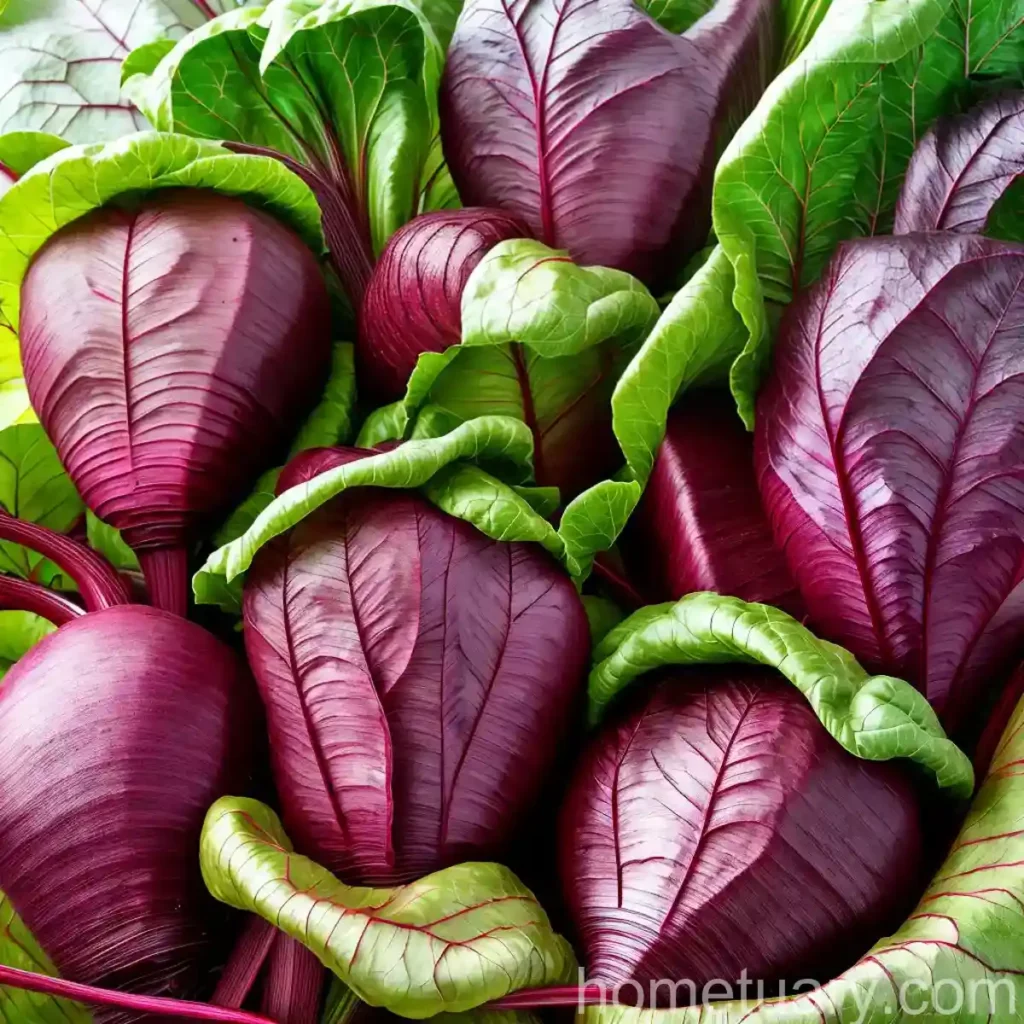All About Swiss Chard (Beta vulgaris (Leaf Beet Group) ‘Bright Lights’)
Swiss chard, scientifically known as Beta vulgaris (Leaf Beet Group) ‘Bright Lights’, is a versatile and nutritious leafy green that has gained popularity among gardeners, nutrition enthusiasts, and culinary experts alike. This vibrant and hardy plant not only adds a splash of color to any garden but also provides a bountiful harvest of delicious and nutritious leaves. In this comprehensive guide, we will explore the cultivation, culinary uses, and health benefits of Swiss chard, as well as tips for managing common pests and diseases.
What is Swiss Chard?
Swiss chard (Beta vulgaris) belongs to the same family as beets and spinach, and it is valued for its flavorful leaves and vibrant stems. The ‘Bright Lights’ variety is particularly renowned for its stunning array of leaf colors, including vibrant yellows, pinks, oranges, and reds. Beyond its ornamental value, Swiss chard is a nutritional powerhouse, packed with essential vitamins, minerals, and antioxidants.
Key Takeaways
Before delving into the details of Swiss chard cultivation and care, it’s essential to highlight some key takeaways about this remarkable plant:
- Swiss chard varieties: There are various Swiss chard cultivars, with ‘Bright Lights’ being one of the most popular for its colorful stems and foliage.
- Nutritional Benefits: Swiss chard is a rich source of vitamins, minerals, and antioxidants, making it a valuable addition to a healthy diet.
- Culinary Versatility: The tender leaves and crunchy stems of Swiss chard can be used in a wide range of culinary dishes, from salads and sautés to soups and stir-fries.
- Gardening Flexibility: Swiss chard can be grown in traditional garden beds, raised beds, containers, and even hydroponic systems, making it suitable for various gardening environments.
With these key points in mind, let’s explore the various aspects of cultivating and caring for Swiss chard in more detail.
Culture
Uses
Swiss chard is cherished for its dual-purpose nature—it is both an attractive ornamental plant and a highly nutritious vegetable. Its tender leaves and crunchy stems are commonly used in a variety of culinary dishes, adding both flavor and visual appeal. Additionally, the ‘Bright Lights’ variety, with its vibrant assortment of stem and leaf colors, is often used as an ornamental accent in flower beds and garden landscapes.
Water
Swiss chard thrives in consistently moist soil, so adequate watering is crucial for its optimal growth. It is important to provide a steady supply of water throughout the growing season, particularly during dry spells or periods of high heat. However, it is equally important to ensure that the soil is well-draining to prevent waterlogged conditions, which can lead to root rot and other issues.
Sunlight
As a leafy green vegetable, Swiss chard requires ample sunlight to thrive. It generally performs best when grown in full sun, receiving at least 6 to 8 hours of direct sunlight daily. While it can tolerate some light shade, prolonged periods of low light may result in diminished growth and less vibrant foliage.
Fertilizer
When it comes to fertilizing Swiss chard, a balanced and organic approach is recommended. Before planting, incorporate a layer of compost or well-rotted manure into the soil to provide essential nutrients and improve soil structure. During the growing season, a side dressing of compost or a balanced organic fertilizer can be applied around the base of the plants to support their nutrient needs.
Soil
Swiss chard thrives in well-draining, fertile soil with a slightly acidic to neutral pH level (6.0-7.0). Loamy soil with good organic matter content is ideal for promoting healthy growth and robust yields. Additionally, ensuring adequate soil moisture retention without waterlogging is essential for this moisture-loving plant.
Pruning
Pruning Swiss chard primarily involves the removal of damaged or diseased leaves to maintain the overall health and vigor of the plant. Regularly harvesting outer leaves for culinary use also has a pruning effect, stimulating the growth of new leaves from the center of the plant. By harvesting mature leaves, the plant’s resources are directed towards producing fresh growth, ensuring a continual harvest throughout the growing season.
Propagation
Swiss chard is typically propagated from seeds, and it is a relatively straightforward process. Sow the seeds directly into the garden soil, spacing them about 2 inches apart and covering them with a light layer of soil. With proper care and favorable growing conditions, the seeds will germinate within a week or two, giving rise to vigorous seedlings. Alternatively, Swiss chard seeds can be started indoors in seed trays before being transplanted into the garden once they have developed several true leaves.
Container Popularity
Swiss chard’s adaptability and attractive appearance make it a popular choice for container gardening. The ‘Bright Lights’ variety, in particular, is sought after for its ornamental value, adding a pop of color to balconies, patios, and small gardens. Its compact size and non-invasive nature make it well-suited for container growth, allowing urban gardeners and those with limited space to enjoy a bountiful harvest of fresh Swiss chard leaves.
Container Growing Tips
When growing Swiss chard in containers, keep the following tips in mind for successful cultivation:
- Select a container with adequate drainage holes to prevent waterlogging.
- Use a well-draining potting mix with added organic matter to support healthy growth.
- Position the containers in a sunny location to ensure sufficient sunlight for the plants.
- Regularly water the plants to keep the soil consistently moist, but not waterlogged.
- Fertilize the plants periodically with a balanced liquid fertilizer to support their nutrient needs.
Common Diseases
Swiss chard is typically resistant to many common foliar diseases, but there are a few issues that can affect its health and productivity. Being vigilant and proactive in disease management is essential for maintaining healthy Swiss chard plants.
Disease Diagnosis
Some common diseases that may affect Swiss chard include:
- Powdery Mildew: A fungal disease that manifests as a white, powdery growth on the leaves, usually in dry and humid conditions.
- Downy Mildew: Another fungal disease that causes yellow or brown patches on the leaves, often exacerbated by moist conditions.
- Leaf Spot: This bacterial disease causes spots and lesions on the leaves, potentially leading to defoliation if left unmanaged.
Disease Management
To prevent and manage these issues, the following practices are recommended:
- Ensure proper spacing between plants to promote air circulation and reduce humidity around the leaves.
- Water the plants at the base to keep the foliage dry, and avoid overhead watering, especially in the evening.
- Remove and destroy any infected leaves to prevent the spread of diseases within the plantings.
- Consider using organic fungicidal sprays or treatments if the diseases persist and worsen.
Common Pests
While Swiss chard is relatively resistant to pests, there are a few insect invaders that gardeners should be mindful of.
Common Pests
Some common pests that may be encountered when growing Swiss chard include:
- Aphids: Small, sap-sucking insects that can distort and stunt the growth of the plants.
- Leaf Miners: Larvae that tunnel through the leaves, leaving characteristic serpentine trails on the foliage.
- Slugs and Snails: These mollusks are particularly fond of tender Swiss chard leaves and can cause significant damage if left unchecked.
Pest Management
To manage pest infestations and protect Swiss chard plants, consider the following measures:
- Introduce beneficial insects, such as ladybugs and lacewings, to prey on aphids and other small pests.
- Regularly inspect the undersides of leaves for signs of leaf miner activity and remove affected foliage promptly.
- Set up physical barriers, such as copper tape or diatomaceous earth, to deter slugs and snails from reaching the plants.
Botanist’s Tips
To ensure the successful cultivation of Swiss chard and the enjoyment of a bountiful harvest, consider the following tips from experienced botanists and gardeners:
- Start Early: Swiss chard is a cold-hardy crop, so consider planting it early in the spring or late in the summer for a continuous harvest.
- Successive Plantings: To prolong the harvest period, stagger the plantings of Swiss chard by a few weeks, allowing for a continual supply of fresh leaves.
- Mulching: Apply a layer of organic mulch around the base of the plants to conserve soil moisture and suppress weed growth.
- Companion Planting: Pair Swiss chard with companion plants like radishes, beans, and alliums to maximize garden space and naturally repel pests.
Fun Facts
- Swiss chard is not actually native to Switzerland—it derives its name from the Swiss botanist who first documented the plant in the 19th century.
- The various stem and leaf colors of ‘Bright Lights’ Swiss chard are attributed to the presence of different antioxidants and pigments, making it a colorful and healthful addition to the garden and the plate.
- Many parts of the Swiss chard plant are edible, including the leaves, stems, and even the young, tender roots, which can be prepared and consumed in a similar manner to beets.
Links to External Resources
Here are some additional resources for further information on Swiss chard cultivation, culinary uses, and health benefits:
- Bright Lights Swiss Chard – Planting and Care Guide
- Swiss Chard Recipes – Cooking Inspiration
- Swiss Chard Nutrition Facts
- Companion Planting Guide for Swiss Chard
- Managing Common Pests and Diseases in Leafy Vegetables
By incorporating the tips and insights provided in this guide, gardeners and enthusiasts can cultivate thriving Swiss chard plants and enjoy a plentiful harvest of nutritious and colorful leaves. Whether grown in traditional garden beds or compact containers, Swiss chard is sure to delight with its vibrant appearance, delectable flavor, and versatile uses.
Beta vulgaris (Leaf Beet Group) ‘Bright Lights’ truly shines as a valuable addition to any gardener’s repertoire, offering both visual appeal and culinary delights.















